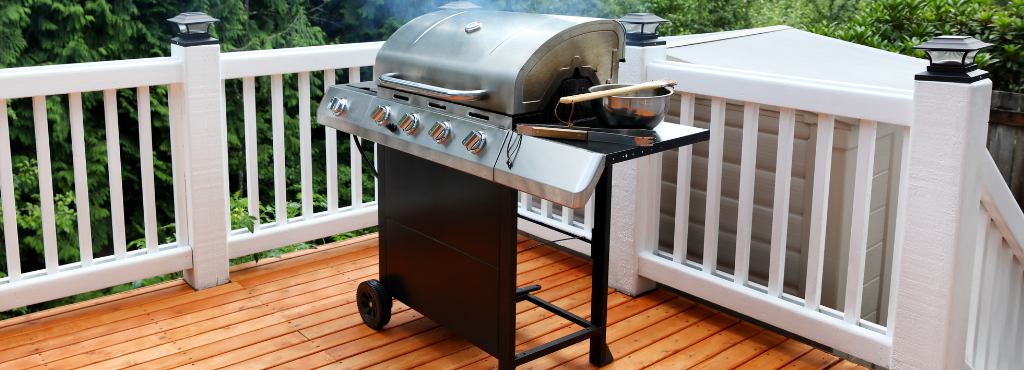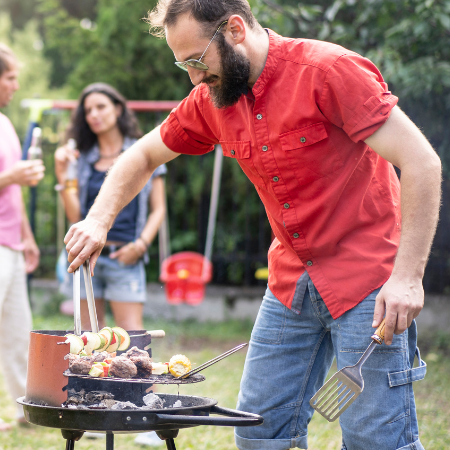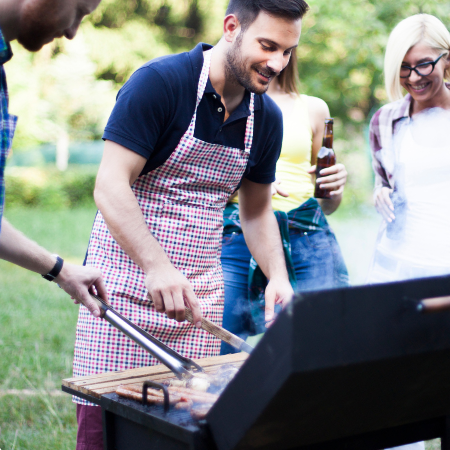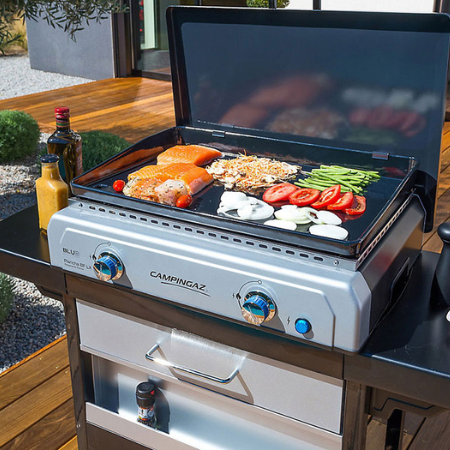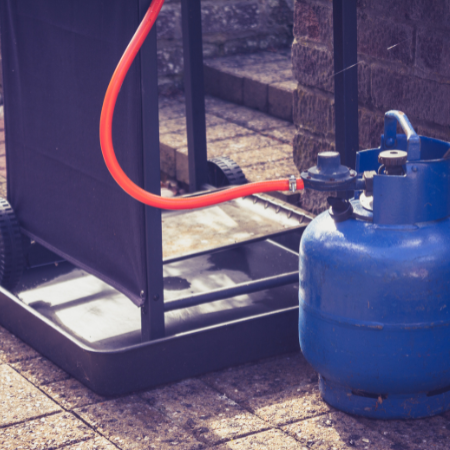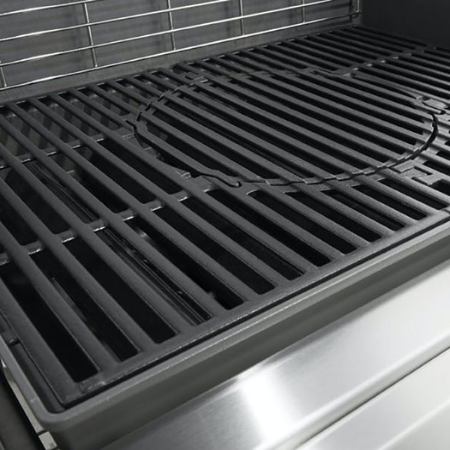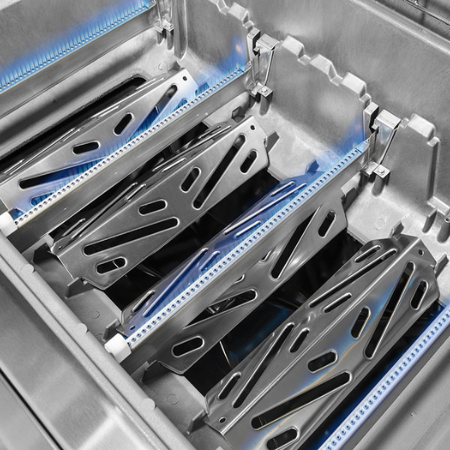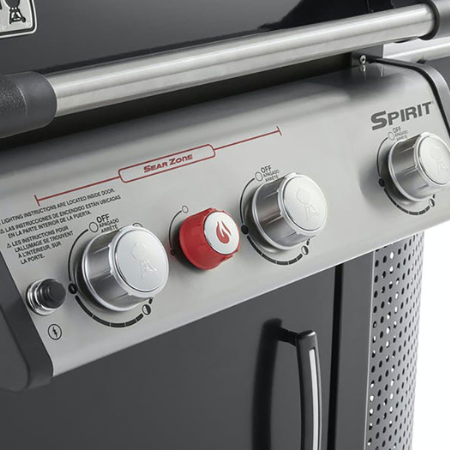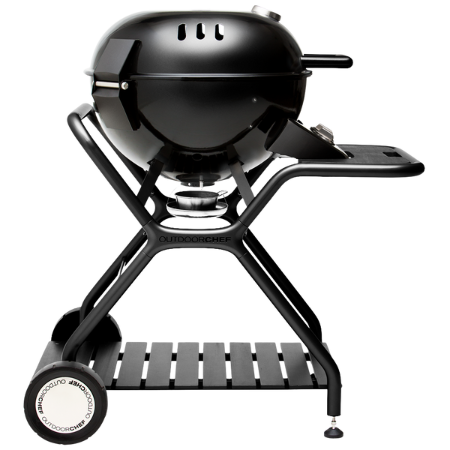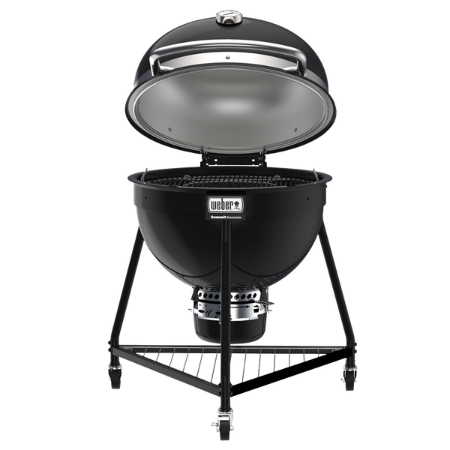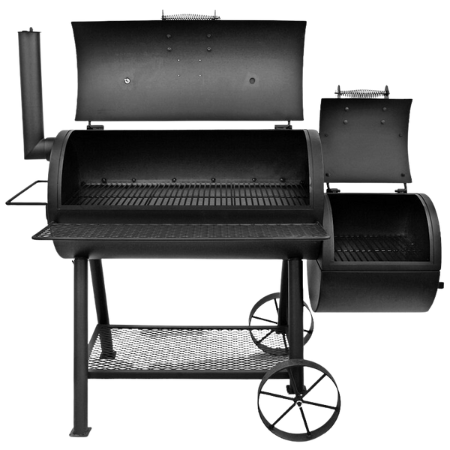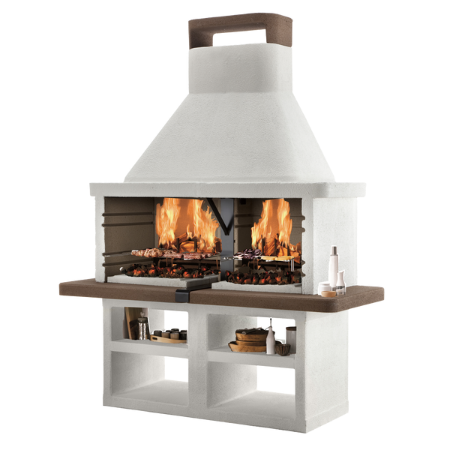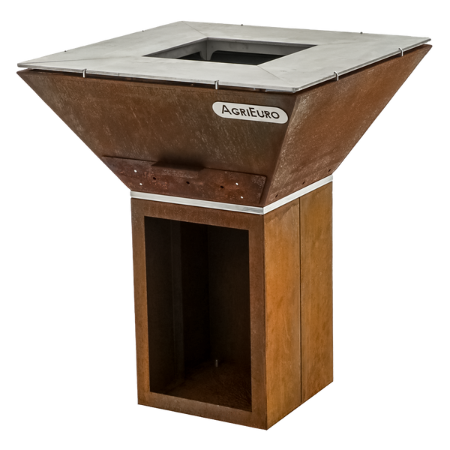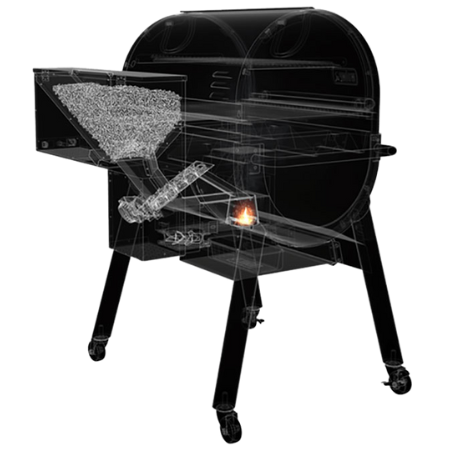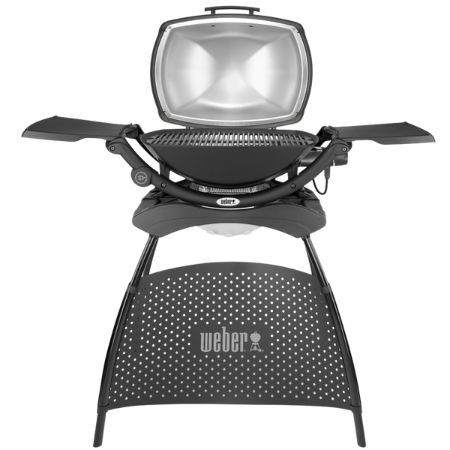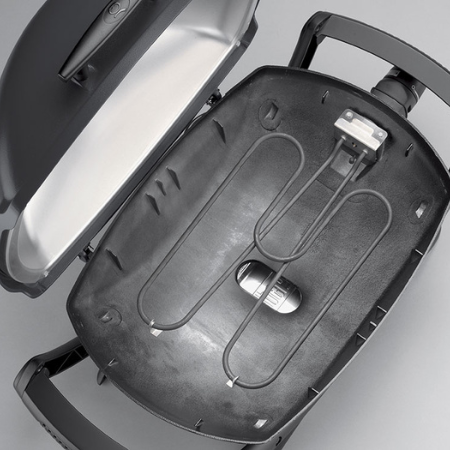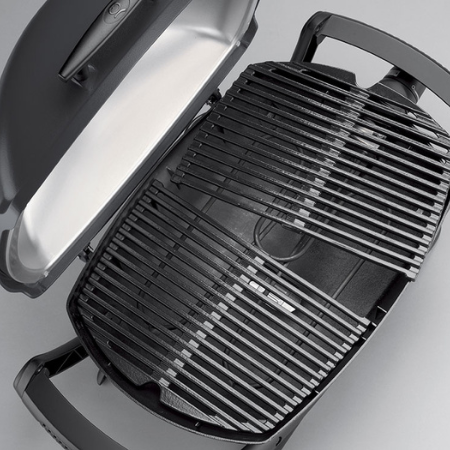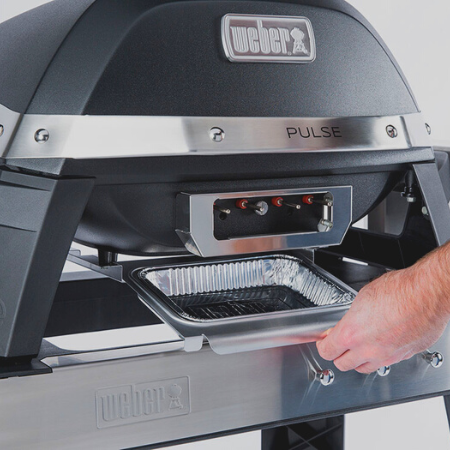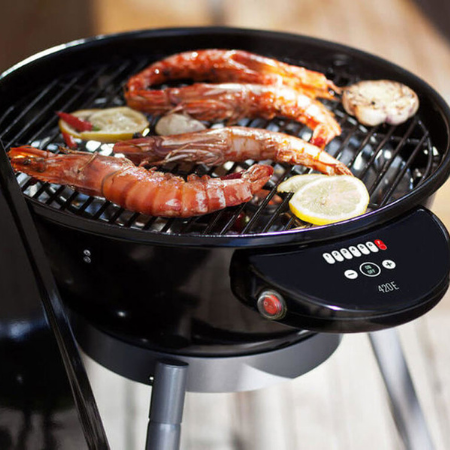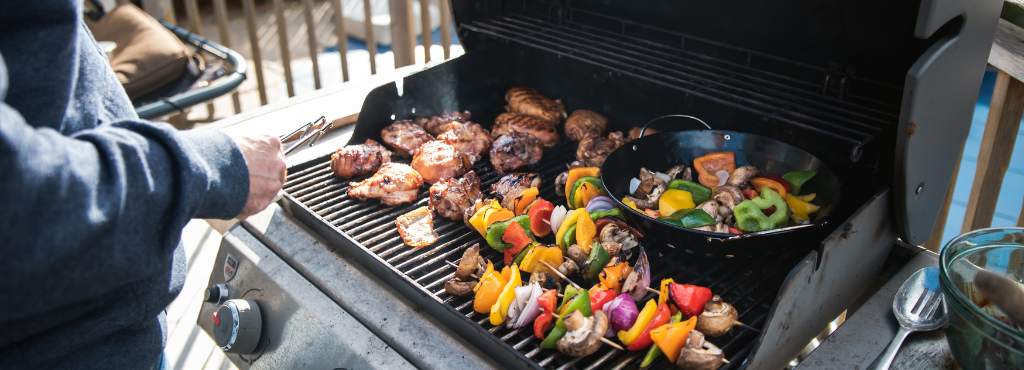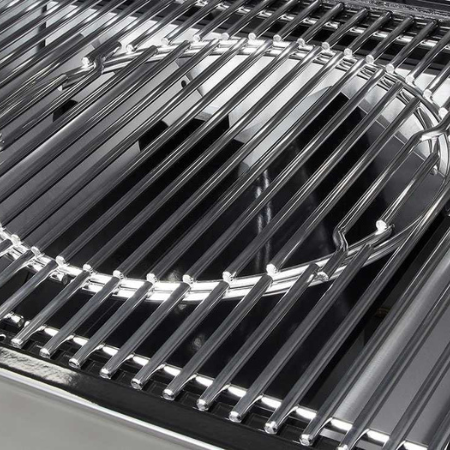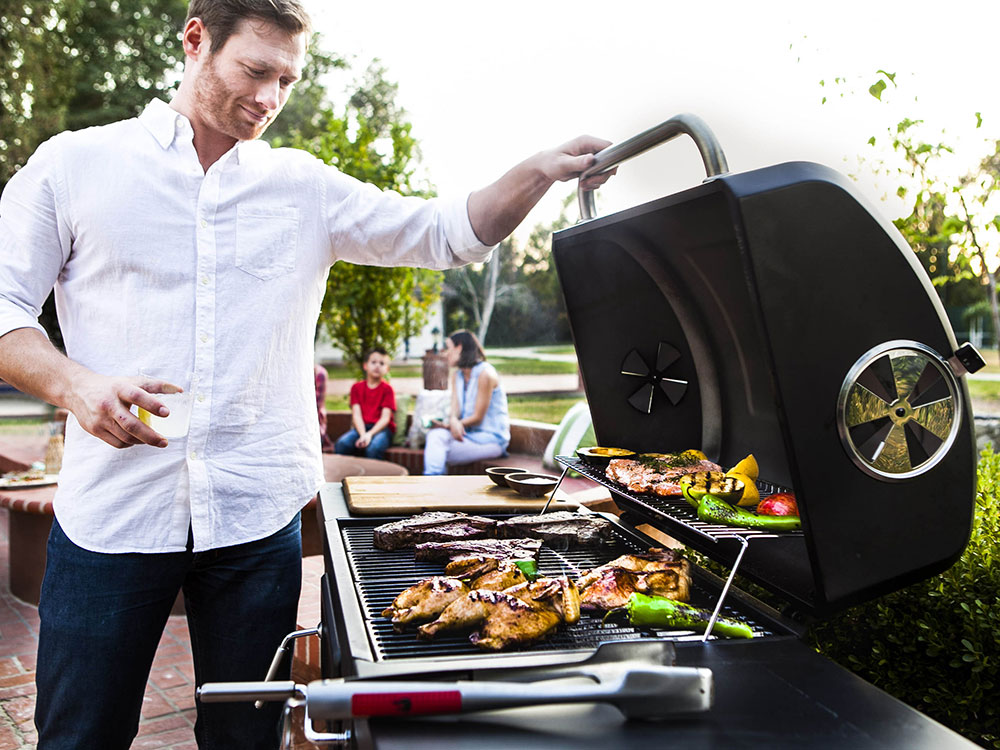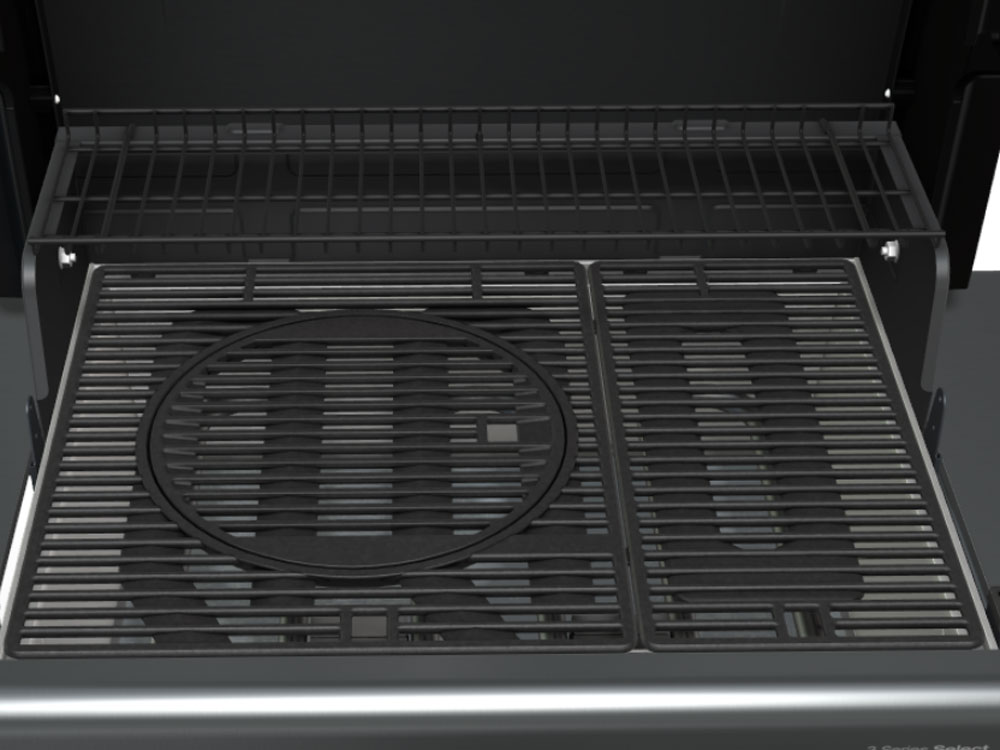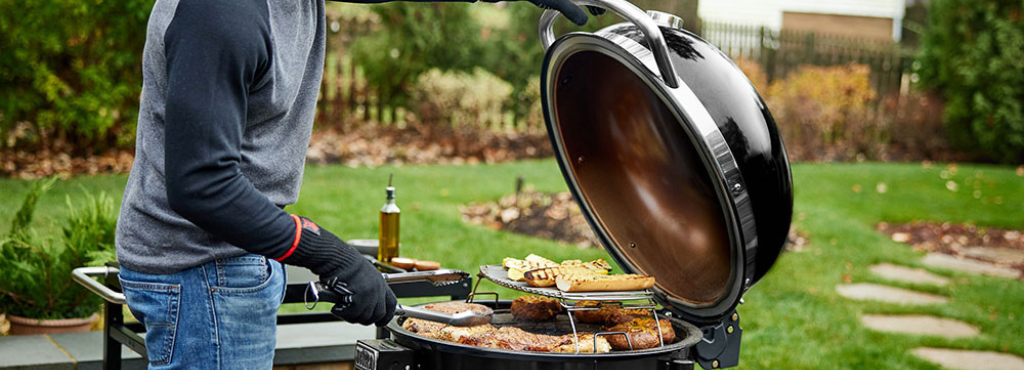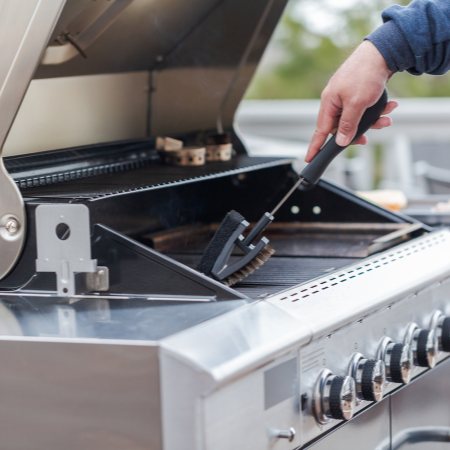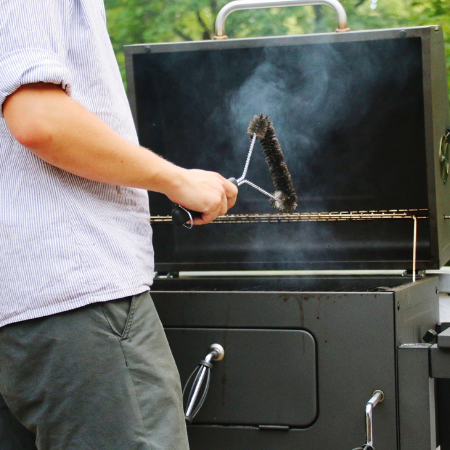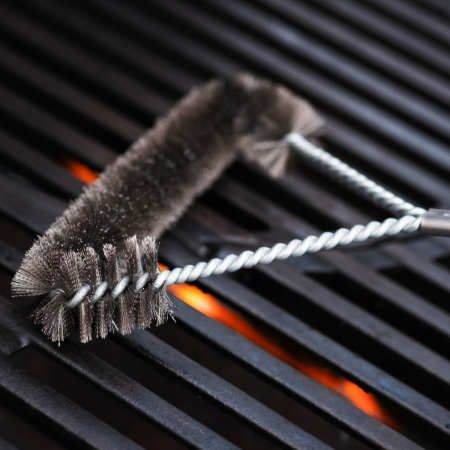A comprehensive guide to purchasing the best barbecue, with useful tips and information on all models on the market and their features.
The Complete Guide to help you choose the Best Grill or Barbecue
by the Real Experts of Outdoor Cooking Equipment
When summer’s heat finally arrives, all barbecue lovers celebrate by spending quality time outside and enjoying grilled food and outdoor cookouts with friends and family.
But what exactly does the word “barbecue” mean?
Normally, when talking about “barbecue”, there is a tendency to associate this term with the widespread equipment for cooking meat, such as planchas or those commonly known as grilling stations. Although both are used for cooking meat, fish or vegetables, planchas and grills are two separate types of equipment, that make use of different cooking techniques and which deliver somewhat unique cooking results depending on which one is used.
The term “barbecue” applies to a distinctive way to prepare meat and fish, characterised by the use of a brazier/kettle bowl, a grate and a lid; furthermore, unlike grill stations, cooking with a barbecue requires time, indirect heat and smoke production. It is indeed the presence of smoke that allows to achieve that typical barbecue-flavoured roasted meat, crispy on the outside crust and soft and juicy on the interior. Indeed, smoke production make sure that the ideal temperature and humidity are reached, while heat is retained to cook food to perfection.
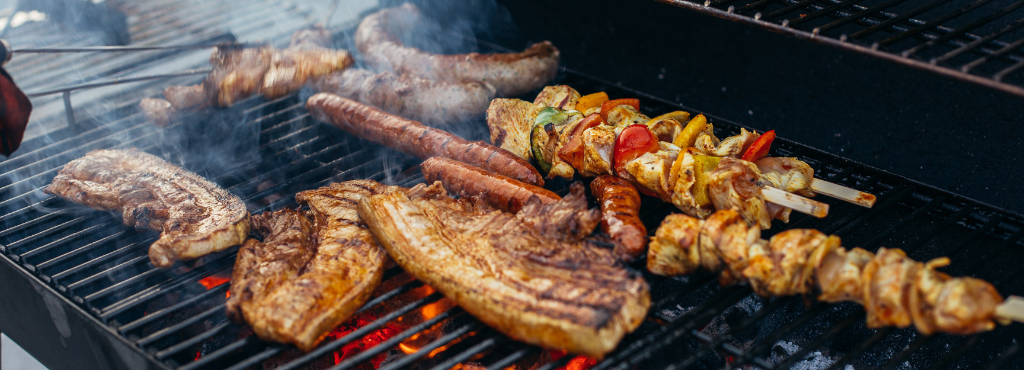
That being said, we are now ready to take a look at the world of grills and BBQs and learn more about their structure, how they work, how many types exist on the market, to finally get an answer to the most common and frequently asked questions.
If you are shopping for a barbecue are not sure which one to choose, then this purchasing guide is exactly what you need!
CONTENTS
1. Types
1.1. Gas grills
The gas grill is the perfect example of how to combine modern style and practicality of use, as well as a valid stand-in to the classic wood-fired or charcoal barbecues. Indeed, the gas grill type is becoming increasingly popular on the market and serves as an optimal solution for when there is no possibility to throw a BBQ feast in total freedom, with no concerns about smoke production, which instead normally cause hassle and bother to the neighbors, for example in a urban context.
Among the main elements that make up a gas grill are:
- a brazier, that is, a bowl made of heat-resistant material. Some models features the possibility of placing lava rocks under the grate (not to be confused with the soapstone, mostly used for direct cooking with meat or to bake pizza when the grill lid creates ove-like cooking); thanks to the heat emitted by the burners, the rocks retain heat and spread it evenly on the entire cooking surface.
- a lid, essential to maintain the temperature constant inside the cooking chamber and sealing in the flavouring smokes.
- the burners;
- Flavorizer Bars, placed between the burners and the grid, catch grease, drippings, marinades and juices that fall down from food being cooked and onto the hot bars to be vaporised and circulate back up to the food to add that extra flavour.
- a cooking grate in cast iron or stainless steel;
- the sear zone with control knobs for gas supply and heat control;
- a grease recovery tray.

Cast iron grid 
Burners with Flavorizer Bars 
Sear zone with control knobs
Setting up a gas grill is a very simple yet delicate operation, as it deals with highly flammable agents (such as propane, methane or butane). First, it is necessary to fetch a normal gas cylinder which should be stored together with the grill in a easy-to-access and properly ventilated compartment; the cylinder is then connected to the grill, carefully, to light it for the first time.
Downsides include transport, which is cumbersome due to connections and cylinders, and maintenance, more complicated than with other types of grill and barbecues.

Weber Genesis EX 435 
Outdoorchef Ascona 570 G All Black 
Char-Broil Professional Pro S 4
1.2. Charcoal barbecues
Worldwide popular, particularly in the States, one of the homelands of the barbecue tradition, charcoal/coal barbecue models are very close to the wood-fired type, which, prior to actually cooking the food, it necessarily involves a preliminary phase consisting in starting the fire to create embers.
Once this stage is completed, the meat is placed on a grate at a distance of 10 cm from the hot coals and cooks by absorbing heat from the combustion of the coal (or charcoal) used.

Weber Summit Kamado E6 
Char-Broil Oklahoma Joe’s Highland Smoker
The design construction of charcoal barbecues is quite straightforward:
- Brazier/kettle bowl in enamelled or stainless steel with vent dampers at the base for airflow control
- Steel cooking grate
- Lid
- Thermometer to monitor the temperature inside the cooking chamber
- Drip tray for grease and juices recovery

Lid damper 
Lid thermometer 
Ash catcher
The advantages of this BBQ type include:
- Ease of transport
- Cost-effectiveness and high availability of fuel (charcoal/coal)
- and, last but not least, the authentic typical intense flavour of barbecued food.
(Attention! Carefully choose the type of charcoal for your BBQ. Use only barbecue charcoal, not to be confused with stove wood briquettes)
Unlike gas grills, cooking with the charcoal type will certainly lead to smoke formation, therefore it is crucial to identify the appropriate context and location when choosing this type.
1.3. Wood-fired barbecues
Wood-fired barbecues are undoubtedly highly appreciated by barbecue enthusiasts because they offer great versatility of cooking types and create a special heat effect which infuse your food with an intense real wood flavour.
These barbecue types essentially consist of two basic components:
- Wood combustion chamber (or brazier) built in steel or cast iron, where the firewood is stored;
- Cooking surface in enamelled or stainless steel, over which the food to be cooked is placed.
These cooking stations are made of heavy sheet metal that can withstand high temperatures, in order to avoid any deformation of the structure after many uses; this aspect is one of the most important to take into account, because it allows to achieve the right temperature for the food to be cooked, without causing damage to the barbecue.

Palazzetti Argos 
Cruccolini Tuscany 
AgriEuro Colorado
Some of the main accessories that can be used in combination with this type of grills include a range of systems whose function is to ensure optimal air flow for feeding the hot coals, side tables for extra storage space, a rotating grate and the spit roaster, a key accessory for the preparation of certain types of skewered meat, such as roasted piglet or rotisserie chicken, and much more.
Similarly to charcoal barbecues, also in this case we recommend sourcing only and exclusively untreated wood suitable for combustion for cooking food.
1.4. Wood-pellet grills
The wood-pellet grill type has only recently entered the market, but has quickly become very popular due to its ease of use and remarkable versatility.
These types of grills stand out from other types for a number of benefits, starting from the ecological one, in fact, wood pellets are a highly environmentally friendly fuel, as they are obtained from waste wood, thus reducing the impact on deforestation, and they also offer a very high calorific value with lower CO2 emissions.
Other significant advantages are:
- the homogeneous cooking of foods and their unique flavour
- the ease of lighting up
- the possibility to conveniently monitor the temperature and distribute heat evenly on the cooking surface
In terms of structure, these grills are equipped with one or more loading hoppers in which the pellet to be burned is poured, then fed through the centre into the brazier by means of an auger.
Inside the auger system is a variable-speed fan which adjust the oxygen supply for consistent temperatures which allow the food to brown evenly through indirect cooking.

Hopper and wood pellets 
Sear zone with digital display and heat valve
1.5. Electric grills
Over the past few years, many of the largest manufacturers have increasingly focused on the production of electric grills, offering alternative models that are more powerful and performing compared to the more conventional types.
Furthermore, the small size and the possibility of being used indoors, and not necessarily outside, makes electric grills the first choice for city life, ideal for BBQ lovers who have limited outdoor space but still want to prepare delicious meals without creating nuisance for the neighbours.

Weber Q2400 
Weber Pulse 1000 
Weber Pulse 2000
The operation of these models is extremely user-friendly: the electric current that powers the equipment passes through the coil (or the heating element) and generates the amount of heat needed to cook the food placed on the grid. The electrical power and the heat output can be adjusted thanks to the practical thermostats, which allow for easy and safe cooking management.
The structure of the electric grill can be briefly described as follows:
- Brazier/kettle bowl
- Cooking grid
- Lid
- Electrical heating element
- Electrical socket connection

Heating coil 
Cast iron grid 
Removable drip tray
If you feel that the electric grill might suit you, remember to make a careful assessment of the materials from which it is made. Before choosing the desired model, special attention must be paid to the construction material of the grid (preferably stainless steel) and of the brazier, which must be able to withstand high temperatures, as these two aspects will eventually make the difference in terms of performance and quality of the electric grill.
2. Main features
In addition to type and fuel, there are several equally important aspects to consider when purchasing a grill or a BBQ; before moving forward, it is worth giving careful thought to how to meet one’s grilling needs or expectations.
2.1. Level of use
Being clear about how to use the barbecue is no small detail; the requirements and expectations of a casual barbecue enthusiast or of an experienced barbecuing expert, the number of diners to be fed, are key elements that may differ and play a major role in choosing the right equipment.
For occasional use and/or casual cookouts, we can move towards hobby-use models. If, on the other hand, we aim for high cuisine standards and, in addition to frequent use, expect to use the barbecue to feed a crowd and enjoy BBQ fun with large groups of guest, then we should only go for more heavy-duty and high-performance models with excellent construction quality in terms of materials and parts assembly.
2.2. Dimensions and weight
As obvious as it may seem, the choice of the most suitable grill or barbecue must necessarily consider the weight and size of the equipment. The reason for this is that these two aspects relate to transportability and the identification of a suitable location for setting up the grilling station.
Some types are naturally well suited to being moved (see electric models), while others, such as gas grills, prove more tricky to move or transport, due to the presence of the gas cylinder (heavy and cumbersome) and standard connections.
Therefore, clarity about the use to be made of the grill or the barbecue and the location and occasions of use are of great importance in order to choose the most suitable model for our needs and, above all, our possibilities.
The right compromise for not giving up the most suitable BBQ type for one’s needs, but at the same time not being overly affected by the cooking station lack of transportability, are the models on cart frame, equipped with wheels or castors for easy mobility.
2.3. Materials
Another important aspect in the purchase assessment are the construction materials, which, needless to say, heavily influence both the performance and durability of the cooking equipment. Moving towards a grill or a barbecue built from top-quality materials, means choosing a highly reliable, versatile and safe equipment that will last over time and ensure consistent, smooth and healthy cooking of food.
In wood-fired, coal and charcoal models, the kettle bowl must support very high temperatures, hence stainless steel or, preferably, cast iron are regarded as excellent materials to provide stability and sturdiness to the barbecue.
Pay attention to the thickness of this element, a key feature for a long-lasting grilling equipment.
As far as the frame is concerned, the best material to look out for is stainless steel, while the cooking grid should be made of stainless steel or cast iron, but some further clarification is required on this topic.
2.4. The cooking grate
Beyond the size and orientation, the choice must focus on whether to move towards a cooking grid made of stainless steel or cast iron, two very different materials in terms of both cooking capacity and construction. Although both options are valid, each comes with its own peculiarities, pros and cons.
- STAINLESS STEEL
Stainless steel grids are not very heavy and prove easy to transport; besides, this construction material is among the most durable and sturdy. In professional settings, such as restaurants, stainless steel grids are the preferred choice in 95% of applications for basically three reasons:
- Ease of cleaning
- Cooking efficiency
- High performance

Stainless steel cooking grid and warming rack 

Stainless steel grate
There are various types of stainless steel on the market, which differ in quality (for example, 18/10 type ranks among the best steel for BBQ grids) and if we choose this type, we need to be very careful to choose a grate with a suitable quality level.
Although very versatile and suitable for all types of food, stainless steel grates (or griddles) fail to retain heat for long periods of time, as opposed to cast iron grids.
2. CAST IRON
Along with stainless steel grates, cooking grids built from cast iron are the best on the market for quality and efficiency. While rather expensive, heavier and more demanding in terms of cleaning, cast-iron grids can withstand high temperatures and, once they have absorbed heat, albeit more slowly than other materials, they are able to retain it for a longer time. This means that heat is distributed in a uniform manner and supplied constantly to the cooking surface, without temperature drops, which results in food being cooked evenly with no loss in flavour.

Cast iron grid 
Charcoal BBQ with cast iron grate 
Cast iron grate and warming rack
Well known drawbacks of a cooking grid in cast iron relate mostly to its heavy weight, which consequently makes it less easy to transport, and its cleaning operations, that must be done thoroughly to avoid oxidation.
Another aspect related to cleaning concerns the high porosity of cast iron, which results in the cooking grate absorbing liquids from the food being cooked. This poses the risk that the absorbed flavours may “contaminate” subsequent food placed on the same grid and alter the taste of our dishes.
2.5. The lid
As we mentioned above, the lid is a signature feature of grills and BBQs that sets them apart from other equipment for cooking. In fact, for grilling perfectionists, a dish can be described as “barbecued” only if the cooking process was carried out including the lid.
This element holds the real secret to barbecuing, as it allows to achieve food with a crispy crust and a soft and juicy interior.
Cooking using a lid means that thick cuts of meat can be roasted to perfection, as the meat does not dry out, but forms a beautifully brown crust while remaining soft on the interior.

Charcoal BBQ with lid
Meat juices and fats fall down onto the hot coals or Flavorizer Bars, where they are vaporised and circulate inside the cooking chamber and back up to the food to add that distinct and unique “cooked on a grill” flavour.
3. Cleaning and maintenance
Regardless of the type we are going to choose, it goes without saying that every grill or barbecue needs constant maintenance and cleaning, and this is something that can not be avoided in any way.
Cast iron grates, for example, must be cleaned thoroughly with great care. The reason for this lies in their porous surface which absorbs many flavours that must be removed very carefully during each cleaning to avoid transferring the flavour to the food next time we use the grid.
The most practical and popular methods for cleaning cast-iron grates include rubbing the cooking surface with vegetable oil (for example, olive oil) while it is still hot (not red-hot!) and scrubbing it vigorously with a grill brush with metal bristles.
Whereas, for stainless steel, the cleaning aspect is totally different: since the non-stick surface is completely smooth, it will be enough to use water and a degreaser agent, such as vinegar or a suitable neutral detergent.
4. The best brands
In the same way as for other types of product, choosing a trustworthy, well-known and reliable brand means making a commitment to quality and safety. The brands we recommend considering when choosing a grill or a barbecue are:




